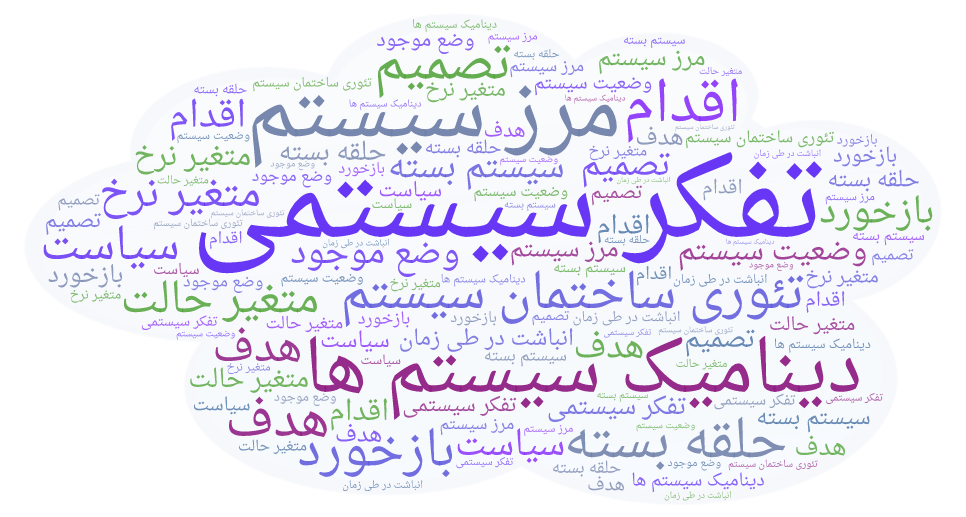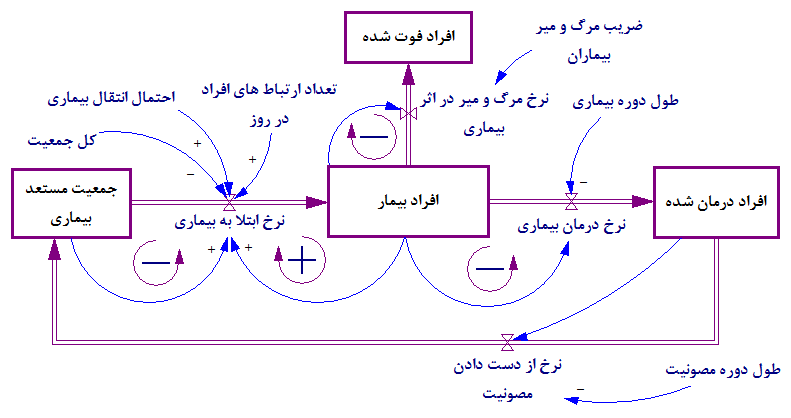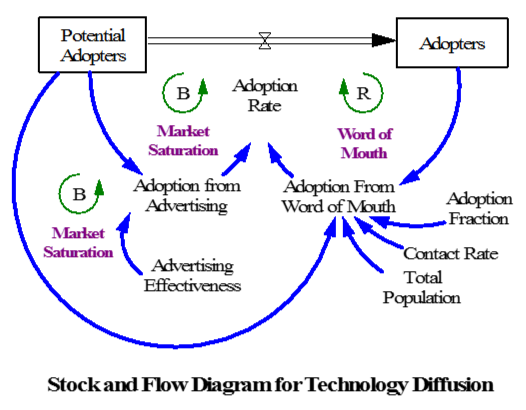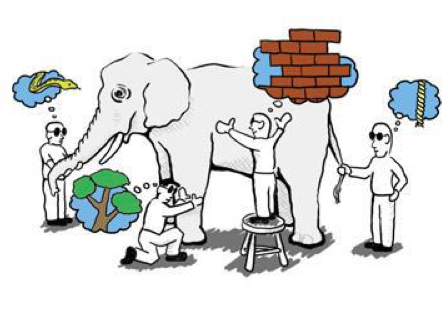
1989, Jay W. Forrester, The Beginning of System Dynamics
1991, Jay W. Forrester, System dynamics and the lessons of 35 years
1992, Jay W. Forrester, System Dynamics, Systems Thinking, and Soft OR
1994, Barry Richmond, System Dynamics/Systems Thinking: Let's Just Get On With It
1996, George P. Richardson, Problems for the future of system dynamics
2007, Jay W. Forrester, System dynamics—the next fifty years
2018, John Sterman, System dynamics at sixty: the path forward
1989, Jay W. Forrester, The Beginning of System Dynamics
1991, Jay W. Forrester, System dynamics and the lessons of 35 years
-
Designing Managerial and Social Systems
-
A New Kind of Management Education
-
Modeling for What Purpose?
-
Unifying Knowledge
-
Enhancing Mental Models
-
Small Models Versus Large Models
-
The System Dynamics Paradigm
-
Endogenous Behavior
-
Sources of Information
-
Learning From Models
-
Surprise Discoveries
-
General Characteristics of Systems
-
System Dynamics and Public Responses
-
A New Basis For Pre-College Education
- Unifying Knowledge
- Enhancing Mental Models
- Small Models Versus Large Models
- Endogenous Behavior
- Sources of Information
- Surprise Discoveries
- General Characteristics of Systems
1992, Jay W. Forrester, System Dynamics, Systems Thinking, and Soft OR
-
System Dynamics Steps
-
Systems thinking and soft OR
-
Case studies
-
Soft operations research
-
Systems Thinking
-
System dynamics, conceptualization phase—theory creation
- Case studies
- Soft operations research
- Systems Thinking
1994, Barry Richmond, System Dynamics/Systems Thinking: Let's Just Get On With It
-
Forrester's View of System Dynamics and Systems Thinking
-
Richmond View of System Dynamics and Systems Thinking
-
Problems with the term "System Dynamics"
-
Systems Thinking: A Paradigm and a Learning Method
-
The importance of "Operational Thinking"
-
Care required in teaching:
-
Causal Loop Diagrams
-
Systems Archetypes
-
The challenges to disseminating System Thinking
- Causal Loop Diagrams
- Systems Archetypes
1996, George P. Richardson, Problems for the future of system dynamics
-
Understanding model behavior
-
Accumulating wise practice
-
Advancing practice
-
Accumulating results
-
Making models accessible
-
Qualitative mapping and formal modeling
-
Widening the base
-
Confidence and validation
2007, Jay W. Forrester, System dynamics—the next fifty years
-
The past 50 years
-
The present
-
Impact on government
-
Focusing on high-leverage policies
-
Quality of work in system dynamics
-
The next 50 years
-
The promoters
-
Public understanding and support
- Impact on government
- Focusing on high-leverage policies
- Quality of work in system dynamics
- The promoters
- Public understanding and support
2018, John Sterman, System dynamics at sixty: the path forward
-
The Challenges of System Dynamics Field
-
Jay W. Forrester: A Bold Innovator
-
Model architecture: compartments, agents and networks
-
Evidence-based modeling: qualitative and quantitative data
sources
-
Parameter estimation and model analysis
-
Rigor or rigor mortis?
-
The path ahead
- برای طراحی این مدل از نرم افزار vensim استفاده میکنیم.
- پاسخ به این سوالات میتواند به طراحی مدل کمک کند:
- چه عواملی بر انتشار یک بیماری واگیردار اثر گذار هستند؟
- پیش از هر چیز، باید فرد يا افراد بیماری وجود داشته باشند.
- برای انتشار بیماری، باید افرادی در جامعه هم مستعد بیماری باشند.
- این افراد چه کسری از جامعه هستند؟
- افراد بیمار در ارتباط با افراد مستعد بیماری، میتوانند منجر به سرایت بیماری به آنها شوند.
- ساختار طراحی شده در این مدل، در چه موارد دیگری میتواند کاربرد داشته باشد؟

- مدل اپیدمی به عنوان یکی از مدلهای پایه، با تغییرات کوچکی میتواند به مدلهای دیگری تبدیل شود.
- یکی از مدلهایی که بر پایه مدل اپیدمی میتواند ساخته شود، مدل انتشار تکنولوژی است.
- پاسخ به این سوالات میتواند به طراحی مدل کمک کند:
- چه عواملی بر انتشار یک تکنولوژی اثر گذار هستند؟
- پیش از هر چیز، باید یک جامعه هدف برای تکنولوژی وجود داشته باشد.
- این جامعه هدف چه کسری از جامعه هستند؟
- چه روشهایی برای معرفی این تکنولوژی به جامعه وجود دارد؟
- افرادی که در حال استفاده از این تکنولوژی هستند، چه اثری بر جذب افراد دیگر خواهند داشت؟
- ساختار طراحی شده در این مدل، در چه موارد دیگری میتواند کاربرد داشته باشد؟

